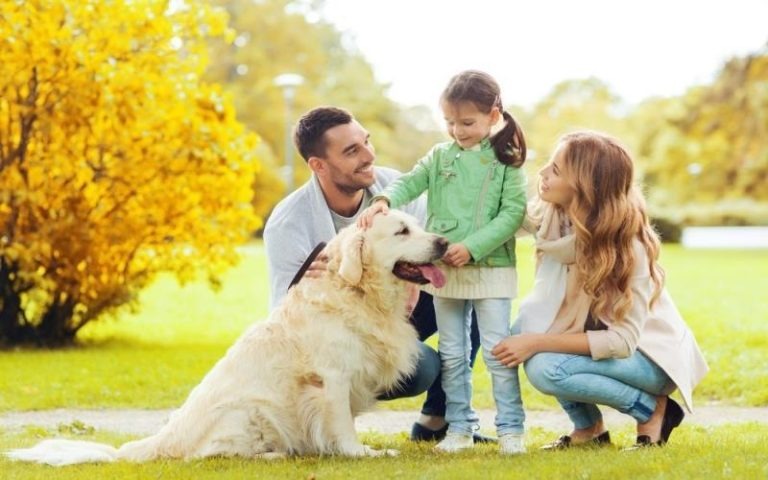
“Training Tails: How Long Does It Really Take to Build New Habits in Your Pet?”
Discover the science, timelines, and expert tips behind training your pet new habits. Learn what affects progress and how to make habit-building with your furry friend smooth, effective, and lasting.
🐶 Pet Star
38 min read · 9, Jul 2025

Introduction
Training a new habit in your pet is a journey filled with excitement, patience, and sometimes a bit of frustration. Whether teaching a dog to sit on command, a cat to use a scratching post, or even training a rabbit to come when called, pet owners are often curious—how long does it take to truly establish a new habit?
The answer is surprisingly complex, influenced by factors like your pet’s species, breed, age, personality, the type of behavior, training methods, and your consistency. This article will break down what science and experts say about the timeline for habit formation in pets, why some behaviors take longer than others, and provide practical advice to help you create lasting habits with your beloved companions.
How Pets Learn Habits: The Basics of Behavior Formation
Understanding habit formation in pets starts with grasping how animals learn. At the core, pets develop habits through conditioning—a process where behaviors are associated with specific stimuli or outcomes.
- Classical Conditioning: Made famous by Pavlov’s dogs, this involves pairing a neutral stimulus with a meaningful one until the pet responds to the neutral stimulus alone.
- Operant Conditioning: This is the foundation of most modern pet training, where behaviors are shaped by consequences, such as rewards (positive reinforcement) or removal of unpleasant stimuli (negative reinforcement).
Habits are essentially repeated behaviors that become automatic responses to triggers. For example, a dog learns to sit when it hears “sit” because it associates the command with treats and praise.
What Research Says About Habit Formation Timelines
One of the most quoted figures about habit formation comes from a 2009 study by Dr. Phillippa Lally and colleagues from University College London. The research found it takes an average of 66 days for a new habit to form in humans, but the range was wide—anywhere from 18 to 254 days.
Though the study focused on humans, it provides a useful benchmark. In animals, forming habits varies widely:
- Dogs: Research indicates dogs can learn simple commands in as little as a few days, but forming a lasting habit might take several weeks to months depending on complexity.
- Cats: Often seen as more independent and less motivated by praise, cats may take longer or need different incentives (like play or food rewards).
- Small pets (rabbits, birds, rodents): Their learning pace and habit formation differ significantly due to species-specific cognitive abilities and motivation.
Factors Influencing How Long It Takes to Train a Habit in Your Pet
Training a pet is never a one-size-fits-all process. Multiple variables come into play, affecting how quickly or slowly a new habit takes root. Understanding these factors can help you set realistic expectations and tailor your training approach for the best results.
1. Species and Breed Differences
Different species naturally learn and adapt at varying speeds. Dogs, for example, are highly social and motivated by rewards like food or praise, making them generally more receptive to training than more independent animals like cats.
Within species, breed differences are also significant. Some dog breeds, like Border Collies and German Shepherds, are bred for working intelligence and typically learn commands quickly. On the other hand, breeds with more stubborn or independent tendencies, such as Bulldogs or Afghan Hounds, might require more time and patience.
Example: A Border Collie may learn to sit or stay in 1-2 weeks with consistent practice, while a more independent breed might take 4-6 weeks or longer to form the same habit reliably.
2. Age of the Pet
Puppies and kittens have an advantage when it comes to learning—they are in a critical developmental window where they’re most receptive to new experiences. Early socialization and training during this time can lead to faster habit formation.
However, adult and senior pets can also learn new habits; it might simply take more repetitions and consistency. Older pets may have ingrained behaviors that require unlearning before new habits can be established.
Expert Insight: According to animal behaviorist Dr. Sophia Yin, “While younger pets are like sponges, older pets benefit greatly from positive reinforcement and patience. Habits are absolutely trainable at any age.”
3. Complexity of the Habit
The nature of the behavior itself plays a huge role. Simple commands like “sit” or “come” are easier to teach and often learned quickly, sometimes in a matter of days.
In contrast, complex habits—like house training, leash manners, or not jumping on guests—can take weeks or even months to solidify. Complex behaviors usually involve multiple steps or require inhibiting natural instincts, which demands more repetition and reinforcement.
4. Training Consistency and Frequency
Consistency is the cornerstone of habit formation. Training sessions that are regular and frequent accelerate learning. Short, frequent training—such as multiple 5-10 minute sessions daily—is generally more effective than infrequent, longer sessions.
Example: A study on dog learning found that dogs trained in shorter, consistent bursts showed faster retention than those trained sporadically.
Inconsistent commands, mixed signals, or skipping sessions can confuse pets and prolong the training process.
5. Trainer’s Skill and Communication
The trainer’s approach and ability to communicate clearly with the pet directly affect training duration. Effective trainers use clear, consistent cues, timing, and rewards that motivate the pet.
Positive reinforcement, using treats, toys, or affection, is widely accepted as the most efficient training method. Punishment or harsh methods tend to slow progress and can damage the pet’s trust.
Habits That Take Days vs. Habits That Take Months: What’s the Difference?
Understanding why some habits stick quickly while others drag on can help pet owners adjust their expectations and strategies.
Quick-Forming Habits
- Simple obedience commands (sit, stay, come)
- Potty training for puppies (especially if started early and reinforced well)
- Basic leash walking cues
These behaviors are typically goal-oriented, clear, and can be directly rewarded, making them easier for pets to grasp quickly.
Long-Term Habits Requiring Months
- No jumping or biting behaviors
- Socialization with other animals and strangers
- Advanced tricks or multi-step commands
- Overcoming fears or anxieties
Long-term habits often require unlearning natural or deeply ingrained behaviors, which is inherently more challenging and time-consuming.
The Role of Repetition and Reinforcement in Building Pet Habits
Repetition is the building block of habit formation. Every time a pet performs the desired behavior and is positively reinforced, the behavior’s neural pathways strengthen, making it easier and more automatic over time.
- Reinforcement schedules: Initially, every correct behavior should be rewarded (continuous reinforcement). Over time, trainers can shift to intermittent reinforcement (rewarding sometimes, not every time), which helps maintain the habit long-term.
- Timing: Immediate reward following the behavior is critical. Delays confuse pets about what they are being rewarded for.
Statistics: Studies show dogs given immediate and consistent rewards learn commands 30-50% faster than those given delayed or inconsistent reinforcement.
Common Challenges in Habit Training and How to Overcome Them
Training pets to adopt new habits isn’t always a smooth road. Many pet owners encounter hurdles that can stall progress, but understanding these common challenges is the first step to overcoming them effectively.
1. Lack of Consistency
As discussed, consistency is crucial. One of the biggest pitfalls is inconsistent training—sometimes rewarding the behavior, sometimes not, or using different commands or signals. This inconsistency can confuse pets and delay habit formation.
Solution: Create a routine training schedule and stick to clear, consistent commands. All family members involved in pet care should use the same words and cues.
2. Unrealistic Expectations
Impatience is natural, but expecting a habit to form overnight sets both trainer and pet up for frustration. For instance, trying to completely stop a dog from barking within a few days may be unrealistic, especially if the barking stems from anxiety or habit.
Solution: Set small, achievable goals. Celebrate progress—like a dog sitting more reliably or a cat scratching a post instead of furniture—and remember that habit formation is a gradual process.
3. Environmental Distractions
New habits learned in a quiet home environment may not transfer immediately to more distracting or stimulating settings, such as parks or busy streets.
Example: A dog might sit perfectly at home but struggle to obey the “stay” command outside.
Solution: Gradually increase distractions during training sessions, starting from quiet settings and slowly introducing more challenging environments to reinforce the habit.
4. Lack of Motivation
Every pet is motivated differently—while some respond enthusiastically to treats, others may prefer toys, playtime, or verbal praise. Without proper motivation, pets may lose interest or ignore commands.
Expert Insight: Veterinarian Dr. Karen Becker stresses, “Understanding your pet’s preferred rewards is key to maintaining motivation and speeding habit formation.”
Solution: Experiment with different types of rewards to find what excites your pet most and keep training sessions fun and rewarding.
5. Past Negative Experiences
Pets with a history of trauma or negative training may be wary or fearful, slowing progress in learning new habits.
Solution: Use gentle, positive reinforcement techniques and be patient. Building trust through calm and supportive interactions often precedes successful habit training.
How Long Does It Take for Different Pets to Learn New Habits?
Dogs
Dogs are considered the easiest and most trainable pets for habit formation, largely due to their social nature and responsiveness to training. Simple commands can be learned in as little as a few days, but forming solid habits typically takes 3 to 12 weeks.
Example: A study from the American Kennel Club highlights that basic obedience skills generally take 6 to 8 weeks to become reliable habits.
Training sessions that are frequent and positive significantly shorten this timeline.
Cats
Cats are often stereotyped as stubborn, but they can learn new habits, just differently from dogs. Cats respond well to positive reinforcement like treats or play but may need longer, often 2 to 3 months or more, to form new habits.
Example: Training a cat to use a scratching post instead of furniture can take several weeks of consistent encouragement and reward.
Cats prefer less repetitive and shorter sessions to avoid boredom.
Small Mammals and Birds
Small pets like rabbits, guinea pigs, and birds have varying learning speeds depending on species and individual temperament.
- Rabbits can learn to use a litter box in 2 to 4 weeks, while more complex tricks might take months.
- Birds, especially parrots, are highly intelligent and can learn to mimic words or perform tricks over months, with training often requiring daily engagement.
- Rodents (hamsters, mice) can learn simple habits like coming to hand within 1 to 3 weeks but have shorter attention spans.
The Science Behind Pet Habit Formation: Brain and Behavior
Training a pet isn’t just about repetition; it’s about how the animal’s brain encodes new information and forms neural pathways.
- Neuroplasticity: Like humans, animals’ brains have plasticity—the ability to change and adapt by forming new neural connections with experience and learning.
- Dopamine release: Rewarding behaviors triggers dopamine, a neurotransmitter linked to pleasure and reinforcement, strengthening the habit loop.
- Memory consolidation: Repetition helps shift a behavior from short-term memory into long-term memory, turning it into an automatic response.
Understanding these mechanisms emphasizes why consistent, immediate rewards are essential to help pets’ brains link behavior with positive outcomes effectively.
Conclusion
Training a new habit in your pet is a rewarding but nuanced journey that requires patience, consistency, and understanding. The time it takes to establish a habit varies widely depending on factors such as species, breed, age, complexity of the habit, and the training methods used. While some behaviors may be learned in days, more complex habits or those that involve overcoming natural instincts can take months or even longer.
The science behind habit formation highlights the importance of repetition, positive reinforcement, and timing to create lasting neural pathways in your pet’s brain. Consistency in training and using the right motivation tailored to your pet’s preferences can significantly speed up the process. Additionally, addressing challenges like distractions, past traumas, or inconsistent routines plays a crucial role in successful habit formation.
It’s also important to set realistic expectations and celebrate small victories along the way. Whether you are training a playful puppy, an independent cat, or a curious bird, every pet has the capacity to learn new habits given the right approach.
Ultimately, habit training is more than just teaching commands; it’s about building a deeper bond with your pet through trust and communication. With patience and dedication, you can help your pet develop positive behaviors that enhance their well-being and your relationship for years to come.
Frequently Asked Questions (Q&A)
Q1: How long does it generally take to train a new habit in a dog?
A: Most simple habits in dogs take between 3 to 12 weeks to form reliably, depending on the dog’s breed, age, and the complexity of the behavior.
Q2: Can older pets learn new habits as effectively as puppies?
A: Yes, older pets can learn new habits, though it may require more time and patience compared to younger animals.
Q3: Why is consistency so important in pet training?
A: Consistency helps pets understand exactly what behavior is expected and reinforces learning by avoiding confusion from mixed signals.
Q4: How often should I train my pet to build a new habit?
A: Short, frequent sessions—about 5 to 10 minutes daily—are most effective for maintaining your pet’s attention and speeding habit formation.
Q5: What types of rewards work best for pet training?
A: Rewards should be tailored to your pet’s preferences, including treats, toys, praise, or play, to keep them motivated.
Q6: Can negative reinforcement help speed up habit training?
A: Negative reinforcement or punishment often slows training and may damage trust; positive reinforcement is more effective and humane.
Q7: How do distractions affect habit training?
A: Distractions can delay habit formation because pets may focus on stimuli other than the training cue, so gradual introduction of distractions is recommended.
Q8: Are there differences in training timelines between dogs and cats?
A: Yes, dogs typically learn faster than cats due to social nature and motivation, but cats can also form habits with patience and proper incentives.
Q9: How can I tell when a habit is fully formed in my pet?
A: A habit is considered fully formed when the pet reliably performs the behavior automatically, across different settings, with minimal prompting.
Q10: What role does environment play in maintaining habits?
A: A consistent environment and routine reinforce habits, while major changes or inconsistencies may cause regression or confusion.
Similar Articles
Find more relatable content in similar Articles

Pets and Mental Health: The Science Behind Emotional H..
Discover the profound impact o.. Read More

How Pets Strengthen Family Bonds...
Pets are more than just compan.. Read More

The Growing Trend of Therapy and Emotional Support Ani..
Exploring the remarkable rise .. Read More

How Climate Change Affects Wild and Domestic Animals...
Climate change is dramatically.. Read More
Explore Other Categories
© 2024 Copyrights by rPets. All Rights Reserved.